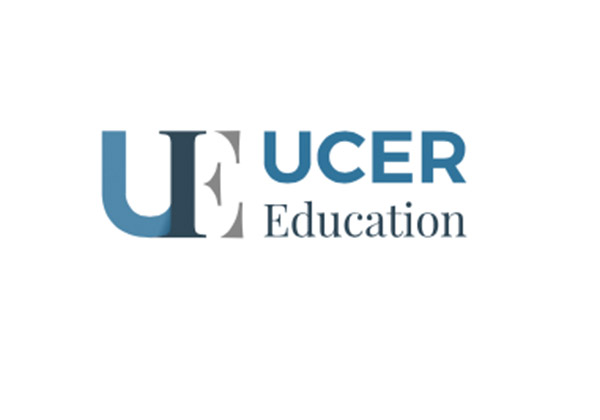Should you Digitise your workflow? Professor Cemal Ucer
Featured Products Promotional FeaturesPosted by: Dental Design 28th October 2019

 Recent advances enable more and more of us to take advantage of workflows greatly assisted by computer technology. This has broad applications in dentistry, from impression taking, to fabrication of 3D printed prostheses and surgical treatment guides.
Recent advances enable more and more of us to take advantage of workflows greatly assisted by computer technology. This has broad applications in dentistry, from impression taking, to fabrication of 3D printed prostheses and surgical treatment guides.
Impression taking
Digital impressions have a number of advantages over traditional models. They are quicker, easier, cleaner, and generally favoured by patients. Studies demonstrate that the accuracy of modern intraoral scanners are similar to conventional methods of impression taking, if not more so in some cases.[i],[ii],[iii]With no loss in accuracy, the greater convenience and efficiency of digital makes it a compelling choice. Physical casts require storage, decontamination, transport (if a laboratory is required), decontamination, are a greater hassle to patients, and so on. Most patients are likely to prefer having impressions taken digitally rather than physically, but for younger patients and for some with sensory conditions or other specialised needs, it can be particularly advantageous. 3D virtual models improve treatment planning and help to monitor changes in the dentition over time.
A fully digital process ensures information integrity (no cast to damage, no physical defects due to trapped air, etc.), and allows for the data to be quickly and easily transmitted between professionals. Taking a digital record is much faster than the process required for a conventional impression, freeing up chair-time and allowing for a quicker turnaround. There are also novel applications, such as potentially being able to immediately show a patient their scan and carry out “virtual smile design” mock ups. Being able to illustrate a point on imagery can aid in explaining procedures to a patient. With the increased emphasis on achieving a patient-centric care model, being able to easily visualise a point can be a great asset when educating patient and seeking their approval to proceed, especially in the field of dental aesthetics.
That said, you should not feel pressured to jump into upgrading everything to digital until you are ready and have received full training in the advantages, limitations and use of this technology. The beauty of digital equipment is that it allows integration with an analogue workflow at different stages of dental treatment. Transitioning piecemeal is generally more-cost effective and presents a gentler learning curve than moving overnight from analogue to digital. Consider which aspects of your workflow would benefit the most from the transition, and which you would most fully be able to take advantage of.
Surgical guides
While initially prohibitively expensive, 3D printing has become more affordable and accessible over time, and this trend can be expected to continue. One application of this technology within dentistry is the production of cost-effective surgical drill guides to help with implant placement in restoratively appropriate locations. Despite some scepticism over guided implant placement – with some believing it adds unduly to the workload – as a part of an integrated digital workflow, it can provide tangible benefits without significantly impacting treatment time or raising the overall cost of treatment. 3D restoratively guided treatment planning and implant surgery could help to streamline the treatment thus allowing the clinician to satisfy patients’ high expectations.
Where cone beam computed tomography (CBCT) is utilised for treatment planning, the use of 3D printed surgical drill guides produced using this data could help to reduce collateral damage, improve the accuracy of surgery and may even produce less post-operative pain and inflammation. Additionally, guided treatment could significantly increase the predictability and accuracy in translating the virtual implant position to the patient’s mouth compared to conventional techniques.[iv]
Given the relative recency of the complete digital workflow, long-term studies into its effectiveness are scarce. A five-year randomised clinical trial comparing computer-guided template-assisted surgery to freehand methodology, found that both techniques were essentially equal in terms of success and survival. However, the guided group did report less postoperative pain and swelling.ivThese results suggest that guided implant surgery can facilitate ideal implant placement, helping to further refine and improve treatment outcomes. Coupling accurate 3D scans with modern treatment planning software can help clinicians avoid iatrogenic accidents, aiding in the identification of anatomical features such sinuses and nerves. Nevertheless, it must be noted that the technology has inherent production and clinical application and positioning problems that makes thorough and structured training crucial to avoid failures.
Ucer Education’s Postgraduate Certificate (PG Cert) in Implant Dentistry (EduQual Level 7) is a one-year dental implant course that will empower clinicians to safely and confidently use reliable and well-documented implant systems. This course will prepare you to start hands-on clinical training with patients (at ICE postgraduate Institute), and enable you to develop implant skills. You will also gain a thorough understanding of, and develop skills in use of full 3D digital workflow including immediate implant restorations. Proven over a quarter century, Ucer Education has a reputation for excellence and provides learners with the theoretical and practical skills to perform dental implant procedures to the very highest standard. Whether your interest is surgical, restorative or both – this course will enable you to develop the knowledge and skills you need.
Technology is a powerful asset, but it is no replacement for knowledge and skill. These simply enable you to get the most out of the technology available, so combining the two is essential.
For more information on the PG Cert in Implant Dentistry, please visit
www.ucer.education or call 0161 237 1842
[i]Papaspyridakos P., Gallucci G., Chen C., Hanssen S., Naert I., Vandenberghe B. Digital versus conventional implant impressions for edentulous patients: accuracy outcomes. Clinical Oral Implants Research. 2015; 27(4): 465-472. https://onlinelibrary.wiley.com/doi/abs/10.1111/clr.12567July 4, 2019.
[ii]Gjelvold B., Chrcanovic B., Korduner E., Collin-Bagewitz I., Kisch J. Intraoral digital impression technique compared to conventional impression technique. A randomized clinical trial. Journal of Prosthodontics. 2015; 25(4): 282-287. https://doi.org/10.1111/jopr.12410July 4, 2019.
[iii]Vandeweghe S., Vervack V., Dierens M., De Bruyn H. Accuracy of digital impressions of multiple dental implants: an in vitro study. Clinical Oral Implants Research. 2016; 28(6). https://onlinelibrary.wiley.com/doi/abs/10.1111/clr.12853July 4, 2019.
[iv]Tallarico M., Esposito M., Xhanari E., Caneva M., Meloni S. Computer-guided vs freehand placement of immediately loaded dental implants: 5-year post-loading results of a randomised controlled trial. European Journal of Oral Implantology. 2018; 11(2): 203-213. https://www.ncbi.nlm.nih.gov/pubmed/29806667July 4, 2019.
No Comments
No comments yet.
Sorry, the comment form is closed at this time.



